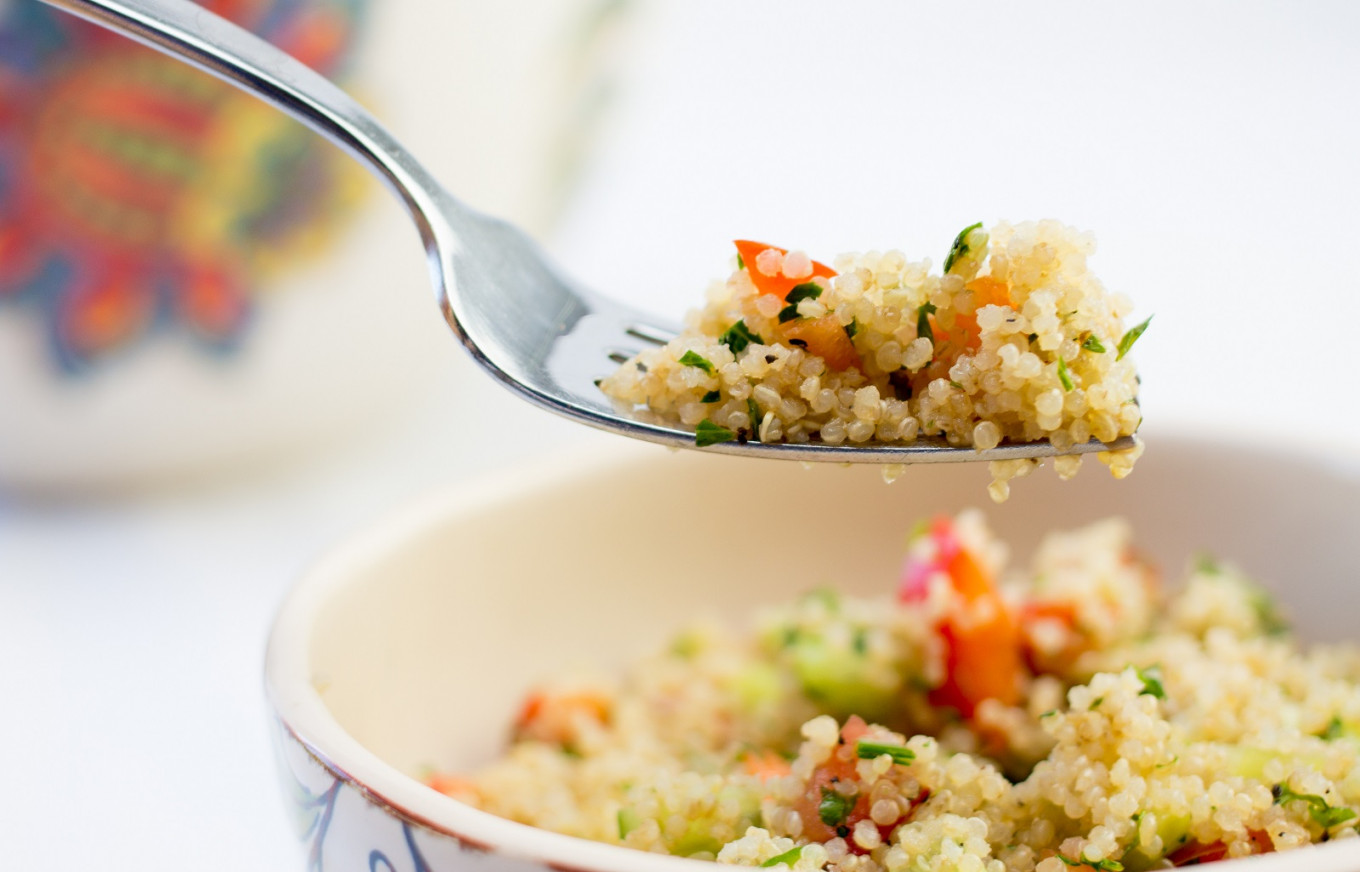Popular Reads
Top Results
Can't find what you're looking for?
View all search resultsPopular Reads
Top Results
Can't find what you're looking for?
View all search resultsHealth food staple quinoa may get pricier as Peru eyes China
Change text size
Gift Premium Articles
to Anyone
H
ipsters beware. Quinoa prices are set to rise as Peru, the world’s largest producer of the seed, will start exporting the protein-rich crop to China.
Officials from both countries signed late last month a customs agreement in Beijing allowing imports of quinoa from Peru for the first time. The accord follows similar agreements for shrimp last year and blueberries in 2016 and comes as the Andean nation rapidly expands shipments of fresh produce while diversifying an export basket dominated by copper and gold.
“It’s an immense opportunity,” said Alfonso Velasquez, chairman of the Exporters Association known as Adex, which expects prices to rise when shipments start. “Increased demand will spur quinoa production and Chinese companies will want to get involved.”
Peru bolstered its position as the world’s biggest supplier of the seed after a surge in demand in the first half of this decade sent prices soaring and sparked a rush to expand output. As a result, growers from Spain to the U.S., who were experimenting with the crop, stepped up production. Export prices then sagged between 2015 and 2016 and have yet to recover, leading Peruvian producers to curb output.
Native to the Andes mountains of South America, the protein-rich, gluten-free seed has become popular among health-conscious consumers worldwide over the last decade, and more recently as a staple in poke restaurants in the U.S.
Read also: Six nutrition-rich foods for fuel prior to exercising
‘The biggest market’
Farmers began mass-producing quinoa on Peru’s arid coast for the first time as prices began climbing a decade ago, using pesticides to control mildew and bugs. Some switched to other crops after the U.S., the biggest quinoa importer, rejected cargoes because of pesticide residue.
The Andean nation exported $125 million of quinoa last year, of which 36% went to the U.S., according to Peru’s trade ministry. Five years earlier, sales to the U.S. accounted for 55% of the total.
Velasquez, a former minister of production, said demand from Chinese buyers could spur large-scale cultivation in highland areas, which are better suited to the crop. “If we maintain levels of quality and acceptance of Peru’s quinoa, undoubtedly Asia will become the biggest market,” he said.
Peru has expanded agricultural output over the last decade after it signed free trade agreements with China, the European Union, Japan and the U.S. It’s now a key global supplier of crops such as avocados, grapes and blueberries.
Exporters see China as one of the markets with the biggest potential for farm goods. While the Asian giant’s demand for copper and other metals makes it Peru’s biggest trading partner, its purchases of fresh produce remain comparatively small. The South American country sold $177 million of farm goods to China last year, compared with $1.9 billion shipped to the U.S.
Chinese investment in the country has also grown, expanding beyond the mining sector into logistics and energy projects.
Blueberries are a good example of how diplomacy with China is paying off. Peru became the second biggest exporter of blueberries to China in 2017 behind Chile after receiving phytosanitary clearance from customs. China previously imported almost all its blueberries from Peru’s southern neighbor.
Peru raked in $554 million from exports of the berry in 2018, up 53% from a year earlier.
“We’re the global sensation in blueberries,” said Velasquez. “Blueberries can be produced all year around, but we’re the only country in this part of the Southern Hemisphere harvesting in September and October,” filling a gap between the U.S. and Chilean harvests, he said.
Velasquez said the berry will be the star of Peru’s annual Expoalimentaria fair in Lima in September, much like quinoa lured foreign buyers to earlier editions of the trade show.
Expanding large-scale farming on Peru’s coast is being held back by delays to new irrigation projects and uncertainty about the future of a special labor and tax regime for agribusiness that expires in 2021, he said. A government-backed law that seeks to extend the regime for 10 years has been waiting to be put to a vote on the floor of Congress for more than a year.











